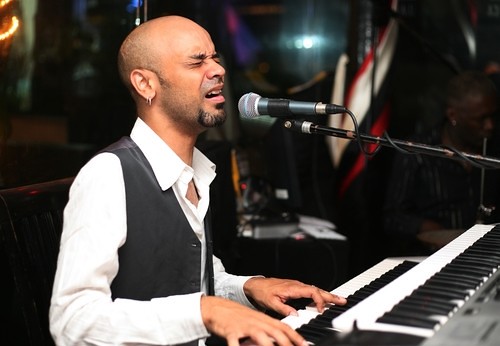
–The Musician’s Way, p. 179
Showmanship – or show-womanship – doesn’t equate with flamboyance; it comes from being who you are, but more so.
For instance, take a minute to recall the stage presence of some memorable performers.
Don’t the seem to themselves on stage? Don’t you get the impression that they’re having a great time and that there’s nowhere else they’d rather be?
That’s showmanship.
It’s rooted in your desire to give an audience a terrific experience, but it flowers when you let your authentic self emerge as you embody the music you perform.
This post coalesces three elements of showmanship that apply to musicians in any genre.
Three Elements of Showmanship
1. Broadcast an Invitation
Whether your on-stage personality is outgoing or laid back, your presence should broadcast an invitation.
The stage and concert hall belong to you, and your listeners are your honored guests.
Your demeanor says, “Let share something magical.”
“Whether your on-stage personality is outgoing or laid back, your presence should broadcast an invitation.”
2. Project Warmth and Enthusiasm
If there’s a central tenet of showmanship, it’s this: Project; don’t reflect.
When you perform on a cold, rainy day, and the heat in the dressing rooms isn’t working, you convey warmth and enthusiasm from the stage. Then, soon enough, you are warm.
When you mess up a phrase, you deliver the next one with added conviction. Then, when your performance concludes, you project the same satisfaction as if you had nailed every note. You did your best, recovered from the slip and performed with devotion. Both you and the audience enjoyed the music no less than if you hadn’t slipped at all.
“When you perform on a cold, rainy day, and the heat in the dressing rooms isn’t working, you convey warmth and enthusiasm from the stage.”
3. Take Command
With skillful showmanship, you never transmit anything that’s going on within or around you that doesn’t serve your artistic aims.
You take command of yourself, your material, and the situation, and then listeners place themselves willingly in your hands.
Parts I & II of The Musician’s Way present inclusive guidelines for becoming an artistic, confident performer.
Related posts
Becoming a Confident Performer
The Essence of Stage Presence
Practicing Performance
Speaking from the Stage
Stage Power
© 2014 Gerald Klickstein
Adapted from The Musician’s Way, p. 179
Photo © Tatiana Morizova, licensed from Shutterstock.com

